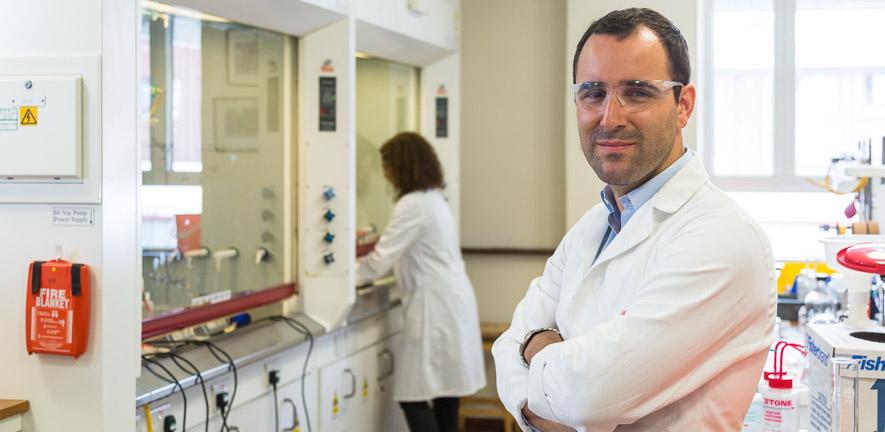
In research published in ACS Central Science, the researchers show in detail how the chemical compound piperlongumine binds to and hinders the activity of a protein known as TRPV2, which is overexpressed in glioblastoma in a way that appears to drive cancer progression. The scientists found that it radically shrank glioblastoma tumours and extended life in two mouse models of this cancer, and also selectively destroyed glioblastoma cells taken from human patients.
“We are thrilled with the prospect of bringing our findings from bench to bedside to make a real impact on the health of people suffering from this horrendous disease,” said Dr Gonçalo Bernardes of this Department, who led the study and is a co-senior author of the paper.
Piperlongumine, which is derived from the Indian Long Pepper, is known to kill cancerous cells in many tumour types, including brain tumours. “This study gives us a much clearer picture of how piperlongumine works against glioblastoma, and in principle enables us to develop treatments that can be even more potent,” said co-senior author Dr Vera Moiseenkova-Bell of PennMedicine, who collaborated in the study.
The project began as a broad investigation of how piperlongumine exerts an anticancer effect. Bernardes and colleagues in Cambridge and the Institute of Molecular Medicine in Portugal used an advanced machine-learning strategy to determine that the compound likely interacts with a family of proteins called TRP ion channels.
Ion channels are tiny molecular tubes that typically sit within cell membranes and allow incoming or outgoing flows of charged molecules (“ions”), such as calcium, potassium, and sodium. The channels usually are sensitive to some stimulus — a class of chemicals, mechanical force, or temperature, for example — which opens or closes the channels, effectively regulating the ion flow. Initial experiments by the Bernardes group revealed that piperlongumine acts as an inhibitor — a channel closer — of a type of TRP ion channel called TRPV2, which exists in many cell types but has functions that are not well understood.
Moiseenkova-Bell and her team then used cryo-electron microscopy (cryo-EM) to determine the high-resolution structural details of TRP ion channels. They were able to show precisely where piperlongumine binds to TRPV2 to inhibit its activity.
In another set of experiments, researchers from the Bernardes groups examined a broad array of cancers and determined that glioblastoma multiforme, the most common form of brain cancer and one that is notoriously difficult to treat, overexpresses TRPV2 and is highly sensitive to its loss. Moreover, they linked higher levels of TRPV2 to greater aggressiveness in the tumour and poorer prognosis for the patient.
Bernardes has founded a spin-out company called TargTex, which is devoted to developing targeted therapies for glioblastoma multiforme, and has already secured funding of €1.5 million. TargTex will continue research and preclinical studies, with the hope of testing the new treatment in clinical trials with glioblastoma patients in late 2022. The research results showing the selective anti-cancer effect of piperlongumine are also relevant to other cancers which express TRPV2, such as melanoma.
Support for the research was provided by the Medical Research Council, the European Union’s Horizon 2020 research and innovation programme, the Royal Society, the Portuguese Foundation for Science and Technology, Agencia Estatal Investigación of Spain, EMBO, and the National Institutes of Health.
Research
J. Conde et al, Allosteric Antagonist Modulation of TRPV2 by Piperlongumine Impairs Glioblastoma Progression, ACS Cent. Sci., 2021.
This article was adapted with permission from a Penn Medicine news release

